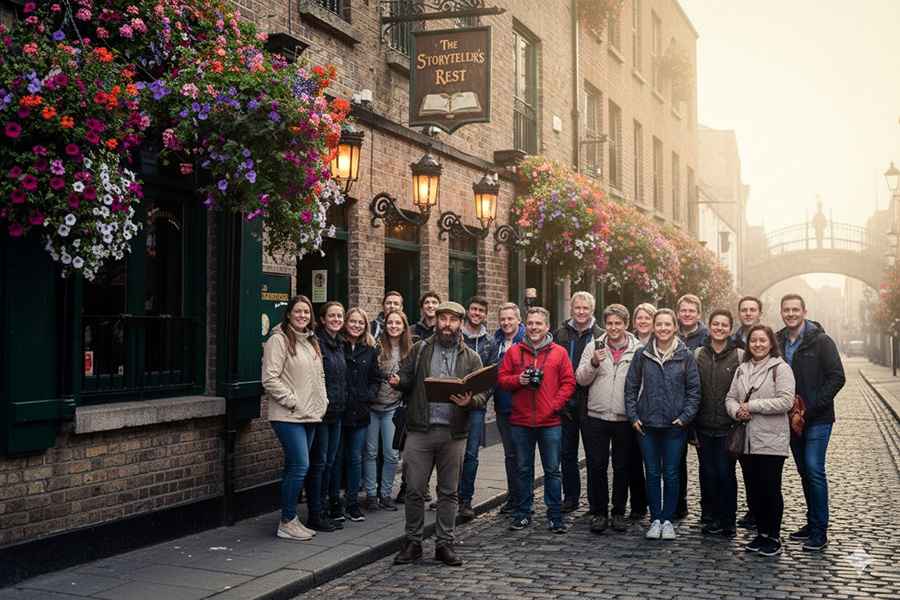The Unexpected Stories You’ll Hear on a Free Walking Tour in Dublin
Dublin, the lively capital of Ireland, is famous for its pubs, poets, and proud history – but beyond the usual highlights lies a city brimming with lesser-known legends, quirky tales, and strange-but-true stories. If you’re hoping to discover Dublin beyond the guidebooks, there’s no better way than to join a free walking tour in Dublin. These tours don’t just take you to the must-see landmarks – they bring the past to life with humor, drama, and a fair share of surprise.

Forget the dry history lectures. This is storytelling at its most alive, delivered by passionate locals who reveal the city's soul through its untold tales. From revolutions to rockstars, Viking ghosts to literary duels, here’s a taste of the unexpected stories you might hear on a free walking tour in Dublin.
Dublin’s Viking Past
When most people think of Dublin, they picture Georgian buildings, lively pubs, and James Joyce – not horned helmets and longboats. But long before Irish rebels or literary giants shaped the city’s identity, the Vikings laid its foundations – quite literally. What began as a Norse trading post in the 9th century evolved into the thriving capital we know today, and traces of that Viking past are still woven into the fabric of Dublin in ways many visitors miss.
On a free walking tour in Dublin, this history comes to life in surprising and vivid detail. Guides often lead groups to Wood Quay, a seemingly ordinary part of town near the River Liffey. But beneath the surface lies one of Europe’s most significant Viking archaeological sites. Discovered during the construction of civic offices in the 1970s, the remains include homes, workshops, and even artifacts like swords and combs that once belonged to Norse settlers. The controversy surrounding the site’s partial destruction is still discussed today – an example of how Dublin’s past continues to spark debate.
Just a short stroll away, you’ll come across Dublin Castle, originally built on the site of a Viking fortress. The castle's foundations, visible in the lower levels, still include stones from that ancient Norse stronghold. Guides often point out how the Vikings chose the site carefully, where the River Poddle met the River Liffey, giving them access to the sea and allowing them to control trade routes. The name “Dublin” comes from the Irish Dubh Linn, or “black pool,” which refers to the dark tidal pool where the Vikings moored their ships.
The Rebellion that Started in a Post Office
The 1916 Easter Rising is central to Irish identity – but what’s astonishing is where it all began: the General Post Office on O’Connell Street. During a free walking tour in Dublin, you’ll stand before this imposing building as your guide paints the scene of poets-turned-rebels, dramatic proclamations, and a six-day siege that changed Irish history. The most surprising detail? Some of the rebellion’s leaders, like Patrick Pearse, were teachers and writers, not soldiers.
Bram Stoker and the Dublin That Inspired Dracula
Think Dracula was born in Transylvania? Think again. Dublin native Bram Stoker found inspiration for his legendary vampire right at home. You might stop by Marsh’s Library, where Stoker once roamed, or walk past the shadowy St. Michan’s Church, whose eerie crypts house real mummies – perhaps fueling Stoker’s dark imagination. Guides often weave these spooky sites into stories of gothic Dublin that are far creepier than any fiction.
The Statue Wars: Molly Malone and Her Many Nicknames
You’ll likely pass the famous bronze statue of Molly Malone, the fictional fishmonger immortalized in the beloved ballad. But few know how fiercely Dubliners debated the statue when it was unveiled. Locals quickly gave her cheeky nicknames like “The Tart with the Cart” or “The Dish with the Fish.” These irreverent jokes are part of Dublin’s personality – and on a walking tour, your guide will serve them with a healthy dose of wit and charm.
Oscar Wilde’s Wit vs. Society
At Merrion Square, you’ll encounter a unique monument to Oscar Wilde, lounging in stone and surrounded by pillars inscribed with his most famous quotes. But what’s less known is the rebellious spirit of Wilde’s youth – his open criticism of Victorian norms, his bold fashion choices, and his tragic downfall. A good guide won’t just quote Wilde – they’ll bring his complex life and daring humor back to life right where he once strolled.
Ha’penny Bridge and the Price of Love
Crossing the Ha’penny Bridge is a daily ritual for Dubliners – but once upon a time, it cost a half penny to pass. You’ll hear how couples used to save up just to walk across together, making the bridge not just a passage, but a symbol of romance and sacrifice. Some say it’s still the most romantic spot in the city, though you might also hear ghost stories of a man who never paid his toll.
The Bottom Line
Dublin is a city of storytellers, where every corner has a tale, and every statue has a nickname. What makes a free walking tour in Dublin so special isn’t just the historical facts – the unpredictable, often hilarious, sometimes heartbreaking stories connecting you to the city's heartbeat.
Whether you're a history buff, a lover of literature, or simply someone curious about the local lore, these free tours offer more than sightseeing – they offer a glimpse into the soul of Dublin, in all its glorious contradictions.